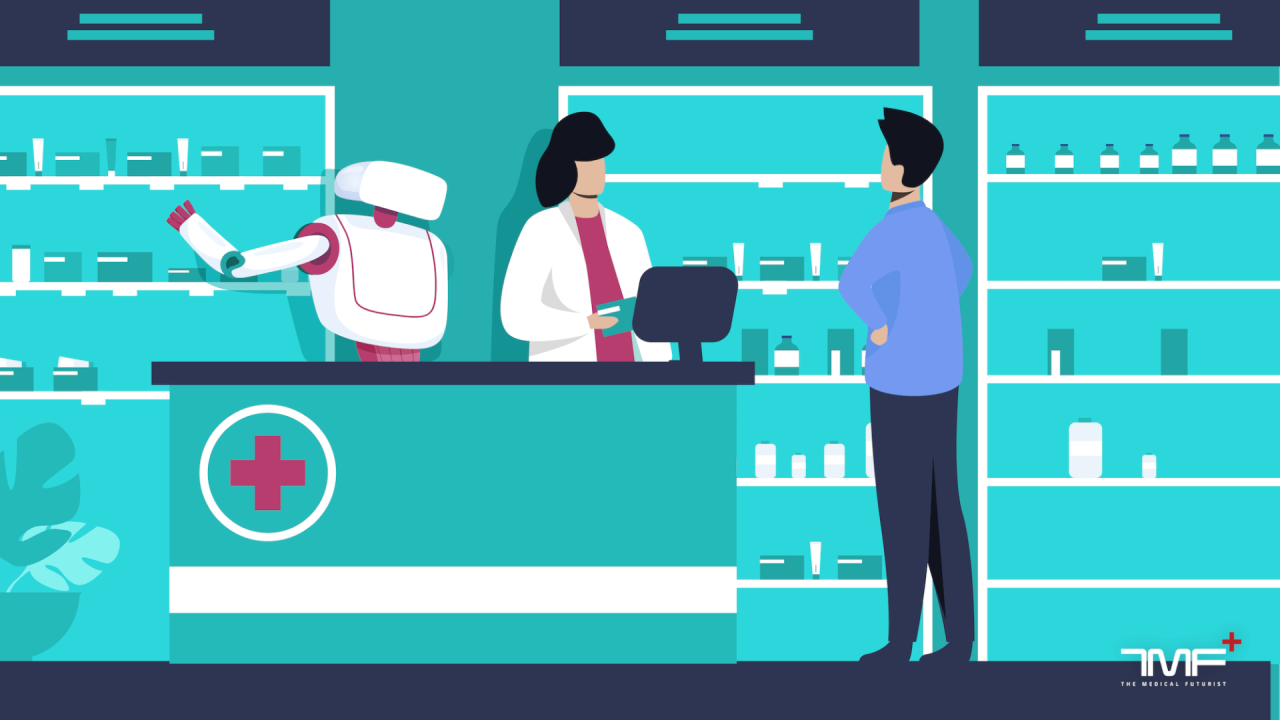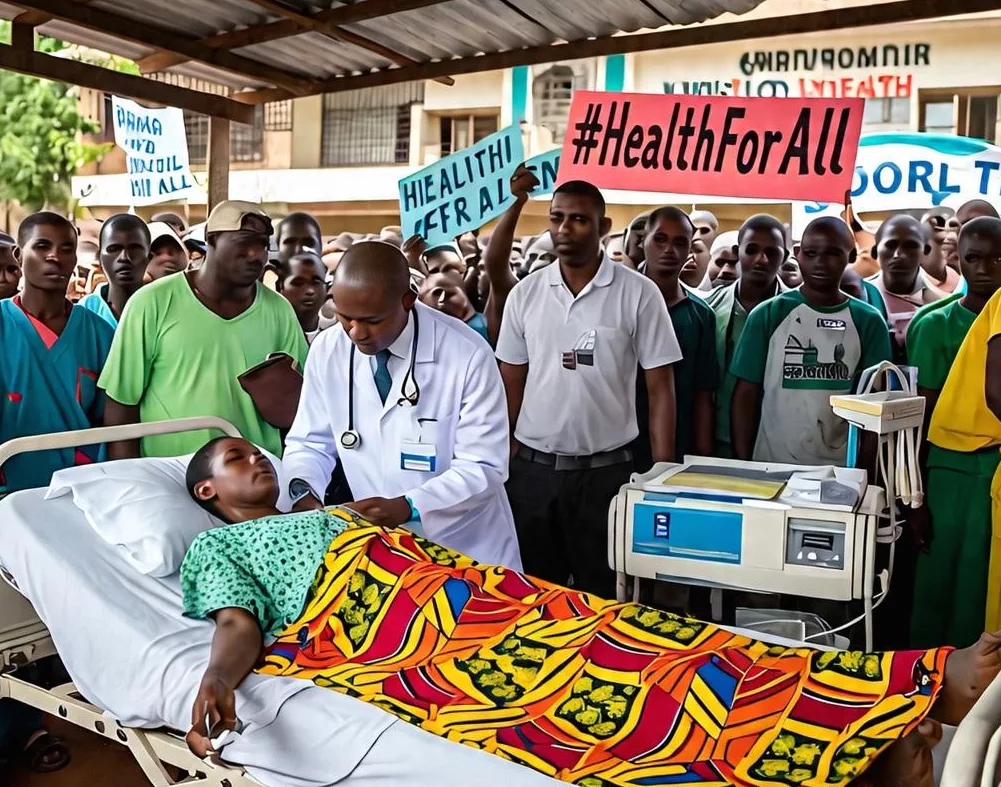The rapid development of medical technology affects every aspect of medicine and healthcare. Even the seemingly most remote and ivory-tower-like institution isn’t impervious to digital health disruption. We are, of course, talking about the pharmacy.
Although these institutions play a crucial role in the healing process, the impression about pharmacists and their drug store is often that they offer a type of commercial/business-like service. The doctor prescribes the appropriate medicine with the appropriate instructions, and the pharmacist provides it in exchange for money. In short, a clear business.
However, with the medical technological revolution, traditional, clear-cut roles become a thing of the past. Empowered patients have more agency over their health, while new technologies support the democratisation of care; shifting the hierarchical doctor-patient relationship to a partnership level. As patients of the 21st century evolve, so must pharmacies and pharmacists in the age of digital health. They have to redefine their place in medicine as well. A simple drug dispenser will not be enough in a shared and community-based economy.
Despite modern society moulding their profession into medical shopkeeping, pharmacists have much more to offer. They undergo a rigorous educational path comparable to that of physicians but are in a better situation to devote more time to patients.
A recent JAMA study even showed that patients visit community pharmacies more often than their primary care physicians. Those community pharmacists thus represent valuable access to a healthcare professional with the added bonus of having more face-to-face time to take advantage of.
The evolution of pharmacies and pharmacists’ role in the digital health era can take several pathways. In this article, we visualise 3 scenarios for this evolution, but the actual one can be a composite of these scenarios sharing similar features while taking a shape of its own. However, the aim is to better depict the possibilities so as to be prepared for what’s next in the practical world of pharma.
Visualising the future of pharmacies
With pharmacists and drug stores adapting to the digital health era, several aspects of the pharmacy setting will have to change. From adopting new approaches to letting go of older ones, the pharmacy of the future will pack a different look and a different role. Leading authorities in the pharmaceutical industry already recognise this need for change and share the same point of view.
Back in 2013, the Royal Pharmaceutical Society already emphasised in its report about the future of pharmacy the need for pharmacies to refocus their strategy of just supplying medicines towards providing services that attend to patients’ needs. Published in January 2019, the “NHS Long Term Plan” for the future included the need for pharmacists to employ digital technology to improve their services and better interact with patients.
To sum up, the basic concept of the future pharmacist covers the ancient “mediwitch” combined with the 21st century tech-guru and scientific professional. A mediwitch, who has a special place in a given community, knows their “patients’” histories and provides basic care for their illnesses with appropriate medicine (or in the middle-ages: herbs or infusions). A tech-guru who knows how to decipher data from health trackers and wearables and is able to provide the necessary care based on the data, and of course a real scientific professional who knows the basics as well as the latest developments in pharma and medicine in general.
Such a mediwitch-tech-guru would come in handy in rural, remote or smaller communities that have significantly less access to pharmacies. This phenomenon has an impact even on the readmission data of hospitals. In rural areas, where people cannot find open pharmacies as often as necessary, researchers found that the readmission data was higher than in urban areas. If the ultimate goal is the improvement of the quality of healing, this phenomenon has to be changed as well.
Thankfully, technology is at our disposal to help. So let’s see 3 potential, tech-aided scenarios that could have a big impact on pharmacies.
Scenario 1: A boost in medical booths with pharmaceutical offerings
A rise in the adoption of medical kiosks to provide pharmaceutical services is the least-likely scenario. These refer to booths located in malls or food courts where patients can enter to have a basic health check and talk to a healthcare professional via telecommunication. Despite some promising offerings, such ventures have already proven to be unsuccessful. One such telemedicine kiosk startup, HealthSpot, went bust in 2015; even after reportedly raising over $40 million and forming a joint venture with the Cleveland Clinic.
Reasons for its failure are manifold from the overhead associated with building and delivering kiosks to the need to pre-arrange appointments. It wasn’t really healthcare on-demand, and technology has evolved past what these physical kiosks could offer; even our smartphones can achieve more. Whether it’s to keep track of suspicious skin moles, detect Alzheimer’s or measure vital signs such as temperature or oxygen saturation, smartphones are the real Swiss Knife of digital health.
Nevertheless, other companies are still treading along the medical kiosk path with pharmaceutical offerings to expand access to care. In October 2019, the OnMed Station started to operate in Tampa, Florida. The health kiosk offers telemedicine visits, remote diagnosis and features an automated dispenser for common medications like antibiotics and antihistamines. In comparison to HealthSpot, this kiosk is fully HIPAA-compliant, does not require human staff and can dispense medicine. Another example is that of the FDA-approved Consult Station from France-based HD4. Their medical booth includes telemedicine consultation with portable diagnostic tools such as an EEG and a stethoscope; not unlike those, you could connect with your smartphone.
Such booths can be adopted on a smaller scale, but given past hurdles, they might not see the widespread success that they hope to achieve. Moreover, since patients themselves have access to the same technology from the phone in their pocket, pharmacies aren’t likely to invest in such kiosks that have the same features.
Scenario 2: Health consultancies
Wait in line; show your doctor’s prescription; take your medicines; pay the bill. These commercial aspects of pharmacies are all too common. And this perception is all too often at the expense of exchanging important medical information. Ever decided not to ask questions about a drug and leave right after settling the bill because the line was so long? What about not asking about vitamins and recommendations for mineral supplements you were checking before arriving at the counter? Maybe the pharmacists themselves did not have time to spare for you anyway.
However, with the help of digital health offerings, pharmacies can change from the simple drug distribution machines that we’re used to and into health consultancies. This is the more likely scenario in the short-term given that technology and organisational schedules already enable it. Pharmacists will have the opportunity to provide basic care to patients with simple problems and/or provide health management consultations. This way pharmacies rise to almost the same level as that of primary care practices.
One of the most important factors for this development is the grass-root approach to healthcare. This involves healthcare professionals – including pharmacists – providing proactive patient care in the location that is most convenient for the patient. When the actual presence of pharmacists is not possible, such solutions as telemedicine fall into place.
For example, Intouch Health and its telehealth network patients in remote areas of the U.S. have access to high-quality emergency consultations for stroke, cardiovascular, and burn services in the exact time they need it. Moreover, with telehealth, medical professionals in such towns and rural areas also have access to speciality services and patients can be treated in their own communities.
This is part of the so-called point-of-care diagnostics, which allows patient diagnoses in the physician’s office, in an ambulance, at home, in the field, or in the hospital. The results of care are timely and allow rapid treatment to the patient. In fact, with digital health tools, a whole department’s worth of diagnostic tools can fit in a briefcase.
A digital stethoscope like the Eko Core lets users livestream recordings for telemedicine purposes. Portable ultrasound devices like the Philips Lumify and the Clarius deliver real-time high-resolution ultrasound images. The Viatom Checkme Pro packs multiple sensors in a single, handheld FDA-approved device to measure ECG, pulse, temperature, sleep quality and more.
From a practical point of view, we see the biggest potential in this scenario as pharmacies could easily invest in those solutions and offer such diagnostic services. Pharmacists can further help patients analyse the data generated and derive meaningful conclusions from it.
In addition, pharmacists are particularly fit for this purpose as they have the time to dedicate; a luxury that most doctor-patient meetings simply don’t have.
Scenario 3: Pharmacies as specialised point-of-care
This final scenario takes it one step further in imagining the future of pharmacies. It depicts pharmacies as specialised point-of-care centres where personalised therapies are made possible. Such centres will 3D-print multiple medications on a single pill, sequence one’s genome and combine such offerings to customise dosages based on one’s genomic data. Automated dispensers can further load the pills onto delivery drones for at-home deliveries. Such centres will serve as a gateway to access advanced healthcare technologies conveniently.
These possibilities aren’t the figment of our imagination but are existing and available today. In mainland Europe, 30-40% of pharmacies use automated dispensers. Medical drone deliveries are routinely performed in Rwanda. Earlier this year, FabRx released the first pharmaceutical 3D printer to manufacture personalised medicines. Their M3DIMAKER allows for the printing of medicines according to the user’s manufacturing needs, which in some cases means one month’s medication (28 pills) in around 8 minutes! Direct-to-consumer (DTC) genetic testing kits are getting more affordable and could soon cost only $100. Similar DTC kits are also gaining traction.
“DTC kits will be a big item, likely to speed up faster due to COVID, in the coming 2-3 years,” Timothy Aungst, an Associate Professor of Pharmacy Practice at MCPHS University, Worcester, told The Medical Futurist. “I would expect to see business partnerships strengthen here, and companies like TruePill or Amazon or CVS to push it, possibly Walmart.”
However, even if some advanced technologies might get integrated in pharmacies sooner, this scenario is still a longer-term one; even if the technologies are already available to make it possible. “Yes, pharmacists could do it, but again, legal issues or payments need to be addressed despite it making sense,” Timothy Aungst added. Indeed, regulatory constraints could hamper this adoption. Nevertheless, such constraints are part of the process of enabling a secured and trusted adoption for the best patient outcomes.
The future of pharmacies will be human
Despite all the tech-talk, a constant element that will be an integral part of the pharmacy of the future is the human element. While in the background automated robotic dispensers will solve logistics and drones will handle deliveries, it’s the human pharmacy staff who will be present at the forefront of the pharmacy.
With robots handling menial, routine tasks, pharmacists will have more time to dedicate to patients, help them interpret the data from their wearables and tackle challenges requiring creativity. There are several good examples out there to demonstrate how these can decrease costs and increase the quality and range of the service pharmacies provide today. While in this article we discussed the scenarios that pharmacies can take, we also analysed the technologies that will lead to these scenarios in our e-book released earlier this year.






